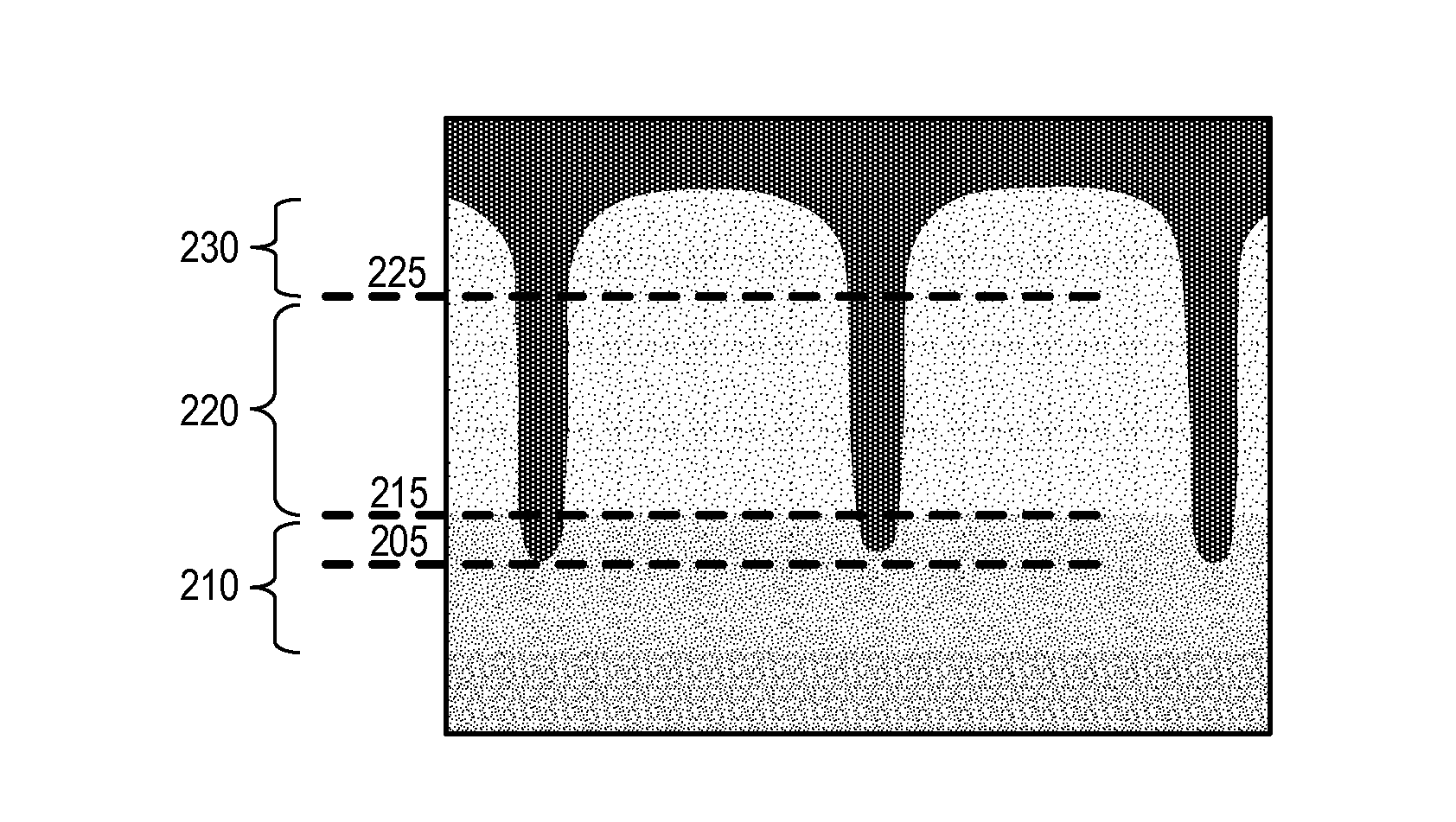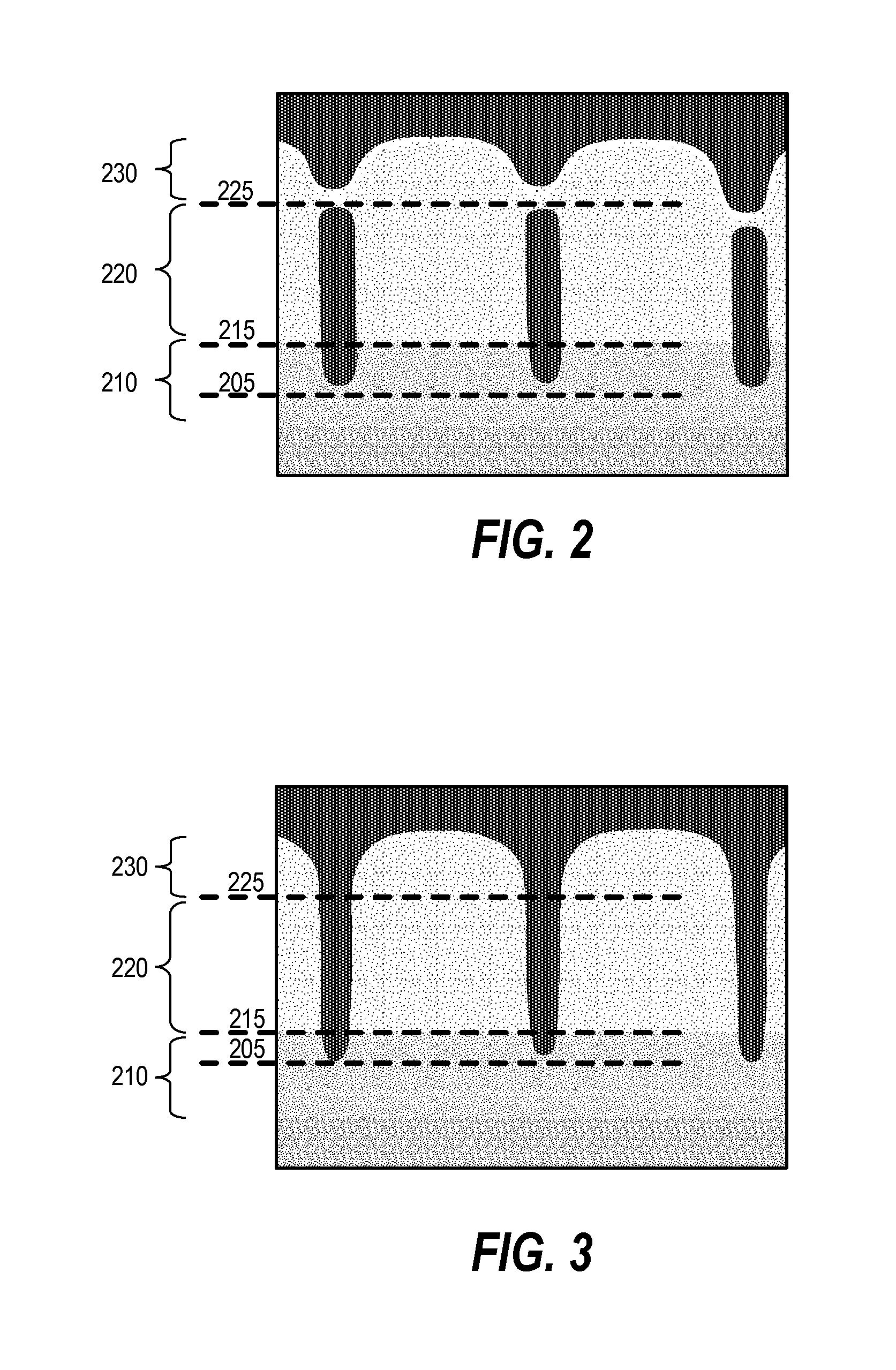Method for Increasing Oxide Etch Selectivity
- Summary
- Abstract
- Description
- Claims
- Application Information
AI Technical Summary
Benefits of technology
Problems solved by technology
Method used
Image
Examples
Embodiment Construction
[0013]Techniques herein include methods for etching an oxide layer with greater selectivity to underlying channel materials. Such an increase in etch selectivity reduces damage to channel materials thereby providing more reliable and better performing semiconductor devices. Techniques herein include using fluorocarbon gas to feed a plasma to create etchants, and also creating a flux of ballistic electrons to treat a given substrate during an etch process.
[0014]Techniques herein can be applied to oxide etching and to etching contact-like features through oxide and landing on a source / drain materials. For example, during middle-of-the-line etches, when etching through oxide and landing on silicon germanium (SixGe1-x) there is poor etch selectivity in that a substantial portion of the SiGe is etched. Embodiments can be used for self-aligned contact etch processes, but are not limited to self-aligned contact etching.
[0015]FIG. 1 illustrates a flow chart describing one example embodiment...
PUM
 Login to View More
Login to View More Abstract
Description
Claims
Application Information
 Login to View More
Login to View More - R&D
- Intellectual Property
- Life Sciences
- Materials
- Tech Scout
- Unparalleled Data Quality
- Higher Quality Content
- 60% Fewer Hallucinations
Browse by: Latest US Patents, China's latest patents, Technical Efficacy Thesaurus, Application Domain, Technology Topic, Popular Technical Reports.
© 2025 PatSnap. All rights reserved.Legal|Privacy policy|Modern Slavery Act Transparency Statement|Sitemap|About US| Contact US: help@patsnap.com



